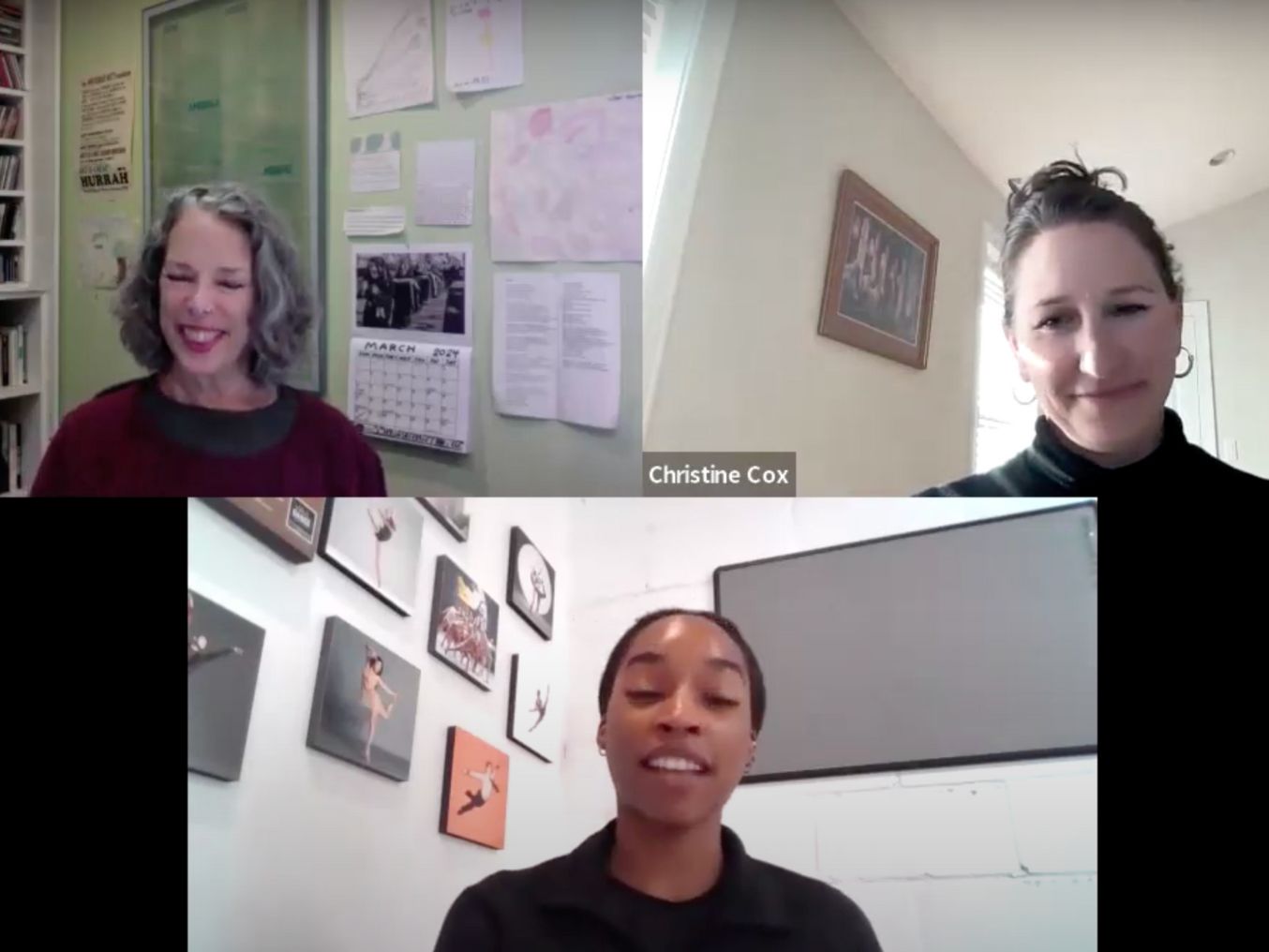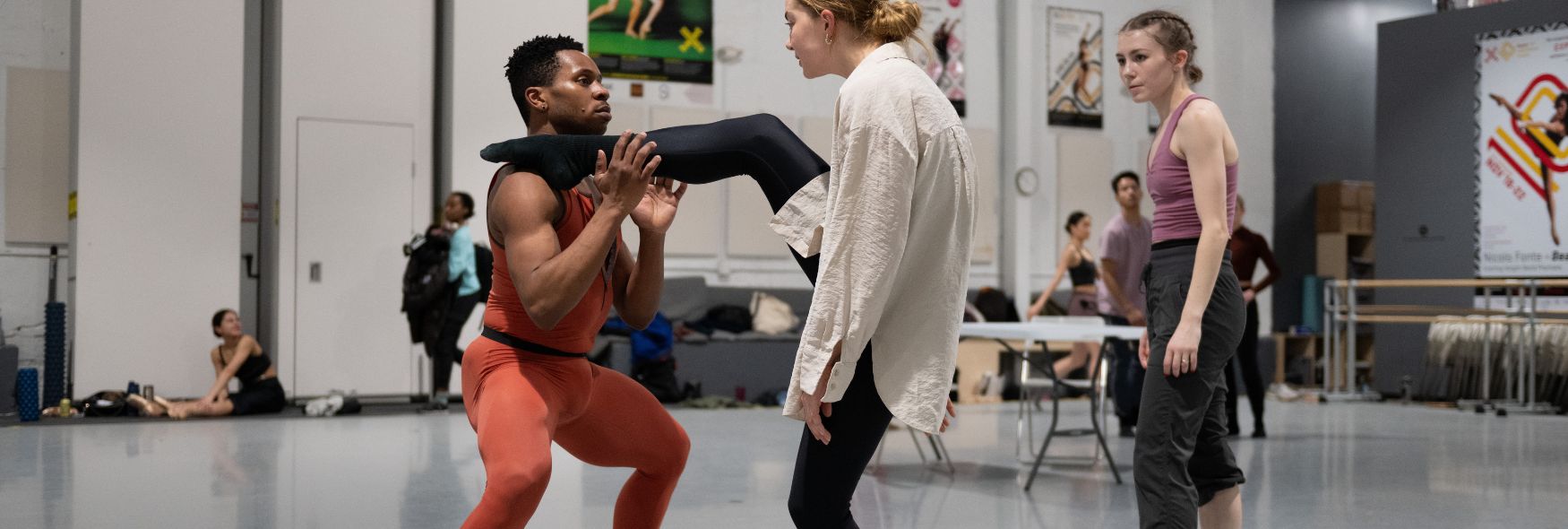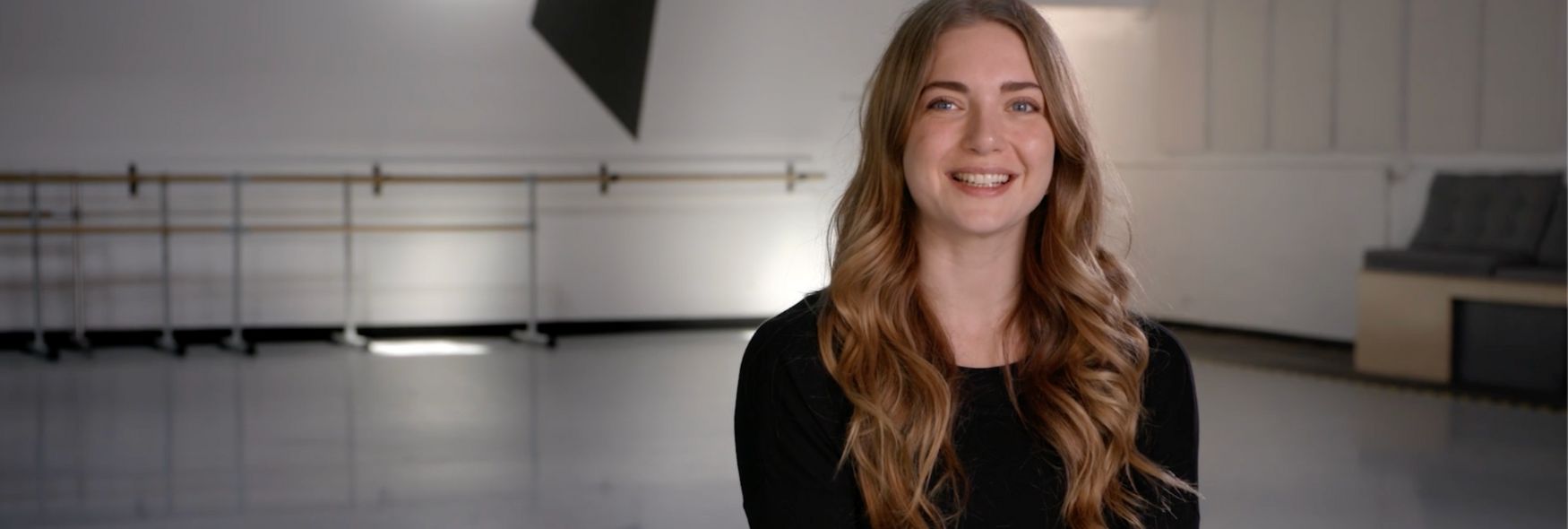First of all, Happy Women’s History Month! Tell us about starting BalletX.
The initial impetus was a bit selfish, because I was still dancing with the then Pennsylvania Ballet. My colleague, Matthew Neenan, and I wanted to get together and make new works that were a bit different, more exploratory, working on curiosity and inventing new ways to use the language and technique of ballet. So we had the entire summer off of 2005 and thought “Let’s put a show together.” And the beautiful thing is that there was a community hungry for this type of work. They loved ballet, but wanted it to be a bit more experimental and daring and adventurous. And so that seed was planted, and then over the years we figured out ways to grow and fertilize the company.
What does Women’s History Month mean to you?
It’s necessary to reflect on how far women have come in society. When I think about the suffrage movement and the women who fought for that fundamental right to vote, it reminds me that understanding the history of challenges women have repeatedly faced over generations is an integral part of creating change and space for women at the table.
As a female leader, what has been the most significant barrier in your career? Have you been confronted with gender-related roadblocks in your career?
With starting something new that’s never been done before, I had to give myself permission to experiment, and in the entrepreneurial spirit, allow myself to make mistakes. While I didn’t experience roadblocks, I did have to manage my expectations of myself so that I didn’t stop reaching for the sky. I also was not formally trained in being a leader or an entrepreneur, so it’s something I’ve been learning as I continue on this path. I think it took time for people to recognize BalletX, but fortunately slow and steady wins the race. It wasn’t a sprint; it’s a marathon. One advantage I have as a human is that I can multitask and problem solve. I must problem solve between 20 and 50 things a day, in the sense that where there’s a will, there’s a way. I love problem solving. That’s fun for me. A challenge was having a baby in 2008. How do I build a company while building a life? It takes a community. Friends and colleagues of mine would babysit the boys, and I’d bring them into the studio. I want my kids to be part of my life in every way possible.
Tell us about the women of BalletX. How does the company celebrate its female employees?
I love working with women. The women that I’ve surrounded myself with are all can-do, positive, and energetic women in the world. Women who exhibit curiosity, interest, and an investment in themselves, and therefore investing in what they’re doing in the company. I would hope to empower women. I mean, that is my goal – to empower women by trusting that they want the same outcome as I do, which is success for everybody. Success for a dance company is discovering joy, love, and creativity through making the art, sharing the art, and producing the art. So the staff is helping produce the art with me, the dancers are part of making the art, the choreographers are developing the art. The ultimate goal is an exchange between the community and the company. We’re about building relationships, about bringing art that expands our humanity, compassion, empathy, and our understanding of one another. That’s what I think artists ultimately want to do. That’s what I want to do as an artist.
What advice would you give to the next generation of female leaders?
It’s all in the details. Work hard. Find joy in what you do. Try to make yourself laugh in the process. Never stop yourself from dreaming. Anything is possible. I never could have dreamed this up. Ever. I’m telling you! I was not sitting there at 30 years old thinking “in 25 years I’ll be here.” Also, acceptance! I accept my flaws, weaknesses, strengths, oddities. I wake up each day and try to work on all those differences in myself. I also think about the ability to be objective and subjective with yourself. The ability to look at what you’re doing, how you are doing it, and how it is impacting everybody. And sometimes you’re going so fast that you can’t have that perspective, so you’ve got to figure out how to slow down and take a breath. I think “why am I doing this” and “how can I do it better so it’s a positive experience for all involved.” And that goes from communicating in a meeting, to articulating changes to a dancer, to my feedback to a choreographer. How can I do that in a way that inspires and that doesn’t build resistance, but builds trust? Ultimately I want the best for everyone involved.
Are there women who have served as mentors and inspired you throughout your journey?
Yes. I have very strong female friends that I can call at any hour that would give me the space to share and get advice. They range from my best friend since I was 5 to a colleague that is in the field. I don’t have one specific woman that is my mentor – women are my mentors. When I see something in someone that I admire, I take note. What did I admire about that person? Is it their calmness, is it the way they use their voice with their children, the way they inspire dancers in the studio? What inspires people? Because a lot of what I’m doing in my role is inspiring people. I try to inspire people to donate to the company, I try to inspire choreographers to find their driving inspiration, I try to inspire dancers to get to the deep core of their motivation, because dancing as a career is really hard. You have to find your motivation each and every day. I try to work with my staff to feel inspired by their work, through their creativity. To not be overbearing, but give them space to create on their own.
Being the well-respected (and busy) leader of BalletX, how do you balance your career and personal life?
My priorities are my family and BalletX. I feel so fulfilled with those worlds. I’m so grateful to be able to get to do what I do each day. I love getting to bring my kids to work, and watch them see dances being made. I make time where I rely on my team. I’m making time this weekend, I won’t go on every single tour all the time. I have a great Associate Artistic Director in Tara Keating. I rely on the team around me when I need to take time and prioritize, because what I don’t want is for my family to feel like they are not as important as my company. That is where my conundrum is in that balance. What I do is trust in my team to take over in places where I don’t need to be making those decisions. That’s a hard place because you have to let go to make time. And sometimes I do get into the nitty gritty of stuff, because I do care about the words we’re choosing, the images we’re picking, the design element of the company. But I do try to float in and out of being too close to the operations of it all. I’m also a soccer mom! I love it! I love being able to cheer on the sidelines, I have a big loud voice. I love watching my kids read with excitement. I love watching them grow up. We slip away to the mountains as a family for some nature retreats that give me perspective and balance.
What are some ways you support other women in your work? How can women support other women in their organizations?
I’m making a concerted effort to really support female choreography. I’ve worked with my board to put in our strategic plan that we will commission over 50% of new works by women each season. I want to be honest with women who have families in our field, to show them it is possible. I also think you can be supportive in a nonverbal way, by showing your team that you can have a family. But you also don’t need to have a family to be a successful woman. It’s not just about a family. I trust and believe in women. I support women by bringing them into this world of BalletX in any and every way I can. I really try to empower all people. Growing up and dancing in the ballet world, I did not have a lot of female leadership to look up to. One year I worked for 2 female directors, but other than that most of my 20 year career it was all male directors and mostly male choreographers. When I was still dancing, I may have been in 30 world premieres, where 2 were by women.
What’s the biggest factor that has helped you be successful?
That I care a lot about all aspects of the organization, from the postcards that arrive at someone’s home, to the way we develop dancers at the barre. It’s like fruits to nuts; I care about all of it and I want everyone who engages with the company to feel like they’ve been given something that enhances their life and world in some small way.
What mistakes have you made along the way? How did they hinder or help your success? What did you learn from them?
Getting too emotional can be a mistake. I don’t really want to be taking things personally. I can get really protective. I try to take space before responding to something, trying to give my sensitive personality time to process. I don’t want to react, I want to be thoughtful in my response. Thinking through emails, it’s just important to take the time to respond. Often, when you give yourself that extra 12 hours before responding you feel differently the next day. You maybe aren’t as upset, maybe you want to completely change how you respond. And that’s really eye opening that you can change so much in that time.
Why do we need more women in leadership roles?
I think women have a different perspective that can provide balance, rather than being overshadowed by dominant male voices. Women often come across in negative ways when they are strong and opinionated, which isn’t the same treatment men receive. It’s important to have different perspectives at the table where decisions are being made.


